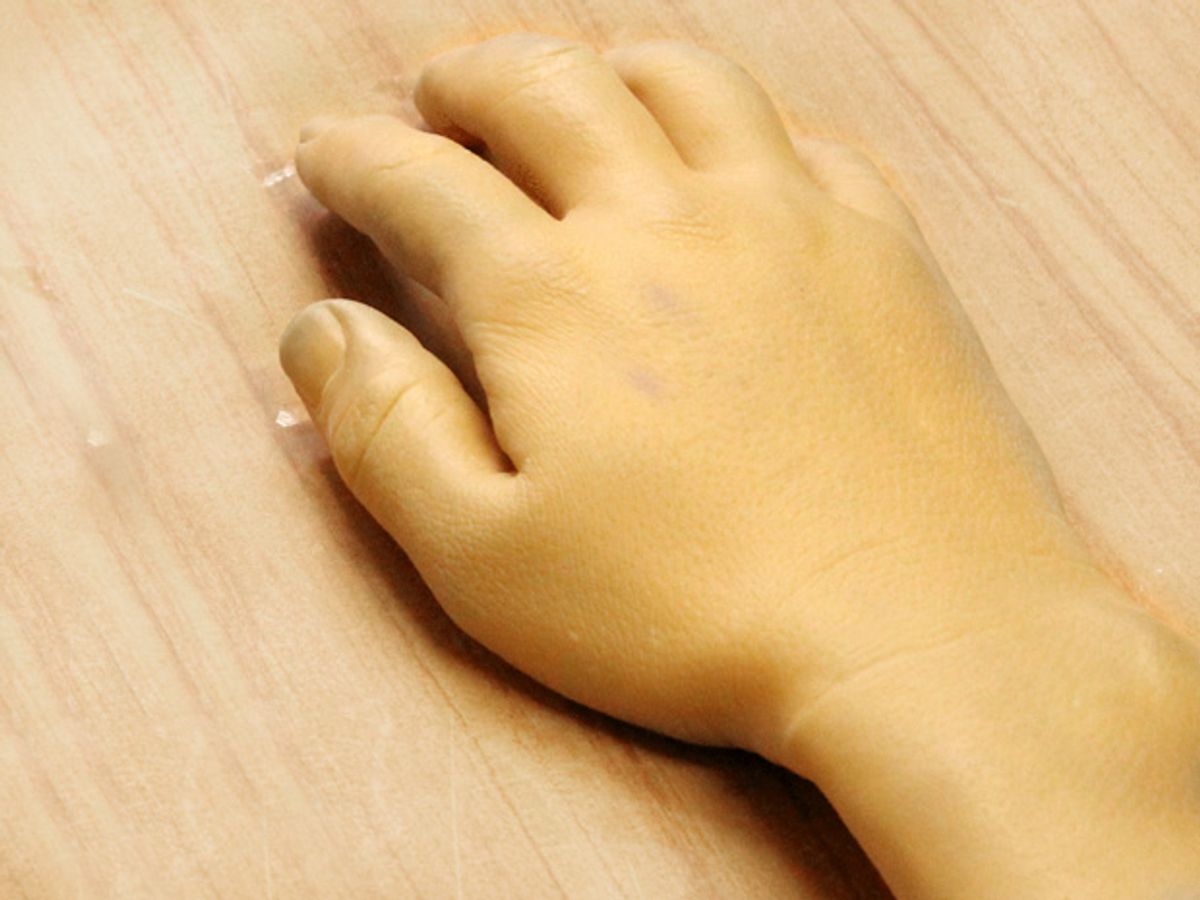Creepy humanoid robots and animated Hollywood characters have been accused of triggering the so-called "uncanny valley" phenomenon—that eerie or unsettling feeling people experience in response to not-quite-human figures. But a new study shows how even a prosthetic hand can trigger a similar sense of unease.
The notion of the uncanny valley comes from a 1970 essay by Japanese roboticist Masahiro Mori, titled "Bukimi no Tani" ("Valley of Eeriness"), which included a graph illustrating the "eerie" sensation on the Y-axis and the human appearance of an object on the X-axis. The result was a chart with a line climbing uphill toward a peak as the aesthetic appeal of the object rises along with an increasingly human-like appearance—that is, until the line drops into the uncanny valley.
Most researchers have studied the uncanny valley idea by focusing on people's reactions to faces or entire bodies that fall on a spectrum ranging from eerie to human. By comparison, a team at the University of Manchester in the UK set up a study with 43 volunteers looking at pictures of human, robotic and prosthetic hands in order to grade the images on a nine-point scale of eeriness.
"Our findings show hands are viewed in a similar way to previous experiments which have looked at faces and bodies," said Ellen Poliakoff, a psychology lecturer at the University of Manchester. "Finding out more about this phenomenon, known as the uncanny valley, may help with the design of prosthetic limbs."
Prosthetic hands of "intermediate human-likeness" received the highest eeriness rankings compared to the human or robotic hands. But prosthetic hands that appeared more human-like became less eerie in the eyes of the volunteers, as detailed in the paper published in the Journal Perception.
The uncanny valley idea isn't confined to just looks. The original essay by Masahiro Mori discusses the idea of an artificial hand creeping people out based on its nonhuman touch and movements. (IEEE Spectrum published the first authorized translation of Mori's essay along with a Q&A with the famed roboticist.)
"One might say that the prosthetic hand has achieved a degree of resemblance to the human form, perhaps on a par with false teeth. However, when we realize the hand, which at first sight looked real, is in fact artificial, we experience an eerie sensation. For example, we could be startled during a handshake by its limp boneless grip together with its texture and coldness. When this happens, we lose our sense of affinity, and the hand becomes uncanny."
Such observations suggest that the uncanny valley can arise through any combination of disjointed expectations—filtered through senses such as vision, hearing and touch— about whether an object is human or nonhuman. A prosthetic hand that looks real but feels cold could prove just as creepy as a robot that appears nonhuman but talks and behaves like a human.
Upcoming studies on the uncanny valley might consider exploring the phenomenon as it's experienced through multiple human senses. But for now, makers of prosthetic limbs could take the advice of Mori in his 1970 essay by making prostheses that don't appear human-like at all.
Photo: The University of Manchester
Jeremy Hsu has been working as a science and technology journalist in New York City since 2008. He has written on subjects as diverse as supercomputing and wearable electronics for IEEE Spectrum. When he’s not trying to wrap his head around the latest quantum computing news for Spectrum, he also contributes to a variety of publications such as Scientific American, Discover, Popular Science, and others. He is a graduate of New York University’s Science, Health & Environmental Reporting Program.



